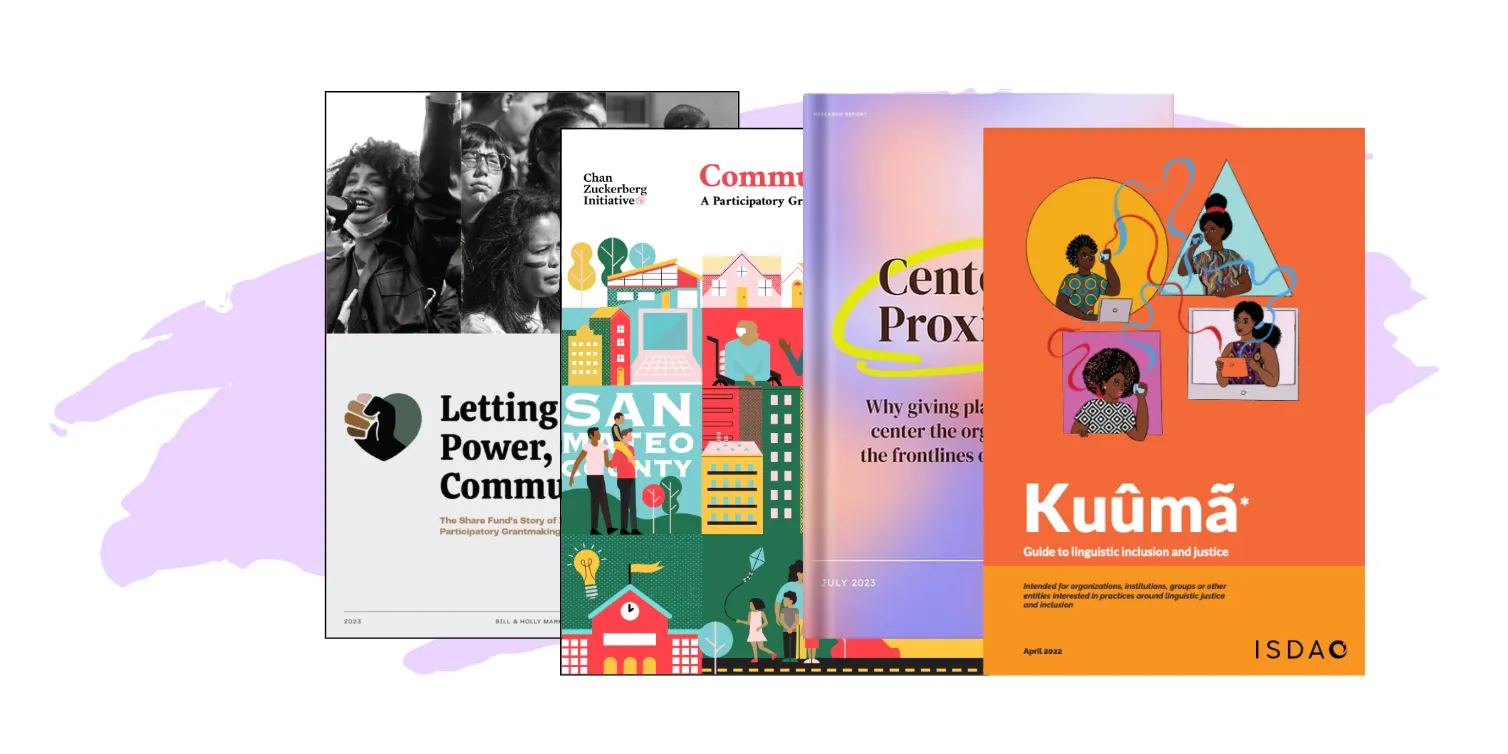We know: there’s a lot to read out there.
We all wish we had time in the day to curl up in bed with a good white paper. In our series TL;DR, we read the latest research, reports and white papers that advance the grassroots grantmaking movement, so they can read as wide an audience as possible. And we try to keep it short, so you can know what’s worth a long read later on.

The Kindle Project’s Report on Flow Funding
The Kindle Project is a grassroots funder that has worked for more than a decade to advance community-driven philanthropy. They’ve been a regular source of creative and experimental grantmaking methods that democratize the flow of money.
They recently released a report sharing lessons on their Indigenous Women’s Flow Fund… Read it here.

Defining the Field of Fiscal Sponsorship
Fiscal sponsors are perhaps best known as a vessel for getting money to the grassroots, quickly. Fiscal sponsors "host" activities or groups of people who are doing charitable work, helping them take in grant dollars before they are legally incorporated – a process that can take several months or longer. Many fiscal sponsors also increasingly offer backend services for their "sponsored projects", like tax and accounting.
Last month, Social Impact Commons and the National Network of Fiscal Sponsors released a landmark report on the state of fiscal sponsorships – the first of its kind in nearly twenty years. The report found that the field of fiscal sponsorship is large and growing…
We spoke with Thaddeus Squire, one of the report’s authors, about how the report is a step toward a larger vision of a more all-encompassing and ambitious model vision of fiscal sponsorship. Read about it here.

A Guide to Power Shifting Approaches in Philanthropy
The Center for Culturally Responsive Engagement is a project at the Michigan-based public health institute MPHI. They recently released a report, Limitless Possibilities, that outlines 24 different power-shifting approaches in philanthropy, across eight categories, including participatory grantmaking, trust-based philanthropy, and partnerships in the Global South.
For a full summary, we recommend Inside Philanthropy’s extensive recent writeup of the report. We found the section about Equitable Partnerships in the Global South particularly interesting – it starts on page 62 of this PDF and offers a unique framing for how to think about decolonizing development.

Shifting Power in New Zealand
New Zealand has been a leader on participatory grantmaking in recent years. The J R McKenzie Trust is a New Zealand-based grantmaker that has been active for decades, and has been writing about contemporary giving practices in recent years.
Their latest offering explores what they define as “mana-enhancing philanthropy” (mana taurite means “equity”) – relationships where the funder and grantees “enact a culture of reciprocity – working together in service of a kaupapa or shared purpose, in ways that ensure all parties have agency and voice, feel understood, and are trusted, respected, and valued for what they bring into the relationship.”
Check out page 14 for a nifty chart on how to build partnerships for purpose, and page 27 for a series of case studies of funders in New Zealand and Australia that have embraced community self-determination, including Tapuwae Roa, the Toi Foundation, and Trust Waikato.

A New Tool to Measure Participation in Philanthropy
Not quite a report, but a treasure trove of information. Katy Love and Diana Samarasan created the Advancing Participation in Philanthropy Tool after years of experience working as participatory grantmakers (at the Wikimedia Foundation and Disability Rights Fund, respectively), and later helping legacy foundations embed participatory practices into their models.
The tool is designed to help leaders at grantmaking foundations assess how they incorporate power-shifting practices across a number of internal functions in a foundation, including grantmaking but also governance, communications, fundraising and operations. It’s already been used by grantmakers from Fondation Botnar to the Diverse City Fund.
We spoke with Katy Love and Diana Samarasan and got into the nitty gritty about how the tool works and how it’s intended to be used. Read the interview here.










.webp)

.webp)
%20(1280%20x%20720%20px)%20(41)%202.webp)
%20(1280%20x%20720%20px)%20(38).webp)
%20(1280%20x%20720%20px)%20(31).png)


%20(1280%20x%20720%20px).webp)











.webp)






.webp)
.gif)

.webp)


.gif)












